Today’s blog is all about the most beautiful fishing villages in Portugal. Dotted along the coast of Portugal, you will still find some preserved Portuguese traditions along with amazing seafood in these seaside towns and villages. Some of my favourites are Nazare, Cascais and Tavira.
Top 10 Fishing Villages in Portugal
Nazare
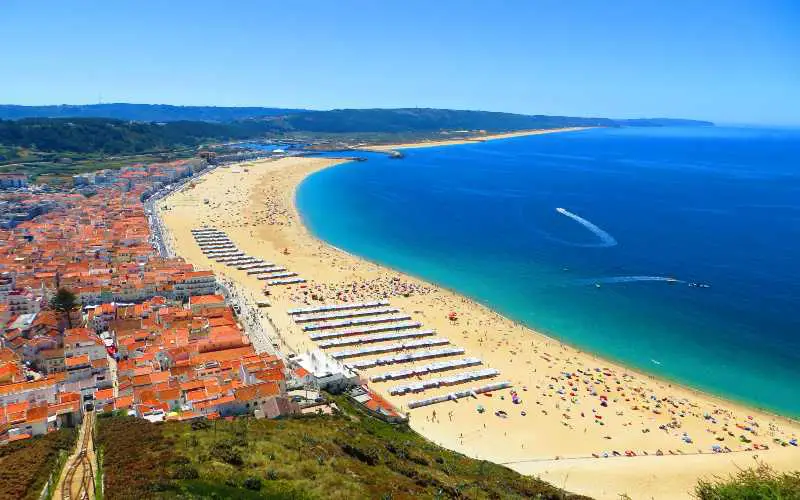
Nazare is one of my favourite Fishing villages in Portugal. Up until the 70s and 80s this fishing village still had local fishermen with their own boats, but the waves were very dangerous and often resulted in men overboard and accidents at sea. The industrialisation of the fishing industry resulted in the new harbour or port being built and this took most traditional fishermen off the beach, but traditions such as the women with 7 skirts are still alive today. You will see these women in 7 skirts selling nuts and snacks from their carts up by the Church on the cliff. Nazare is a famous surf spot and is the location where the largest wave was ever surfed!
Sagres

Leafy paths and whitewashed streets meander down to the small fishing village of Sagres, which overlooks the narrow ocean inlet to the Atlantic Ocean.
The name Sagres derives from the Latin words “sacrum” or “holy place”. The area was once dedicated to the cult of a nameless divinity translated from Phoenician. It was an important spiritual site for the ancient peoples of southern Portugal, a tradition that continues to this day with the many festivals and religious processions.
Sagres is located near Cape St Vincent on the west coast of southern Portugal, which makes it one of the westernmost points in mainland Europe. This strategic geographical position made it a key point for the maritime exploration and trade in the 15th century.
As well as attracting many new settlers, Sagres became an important centre for seafaring and overseas exploration. It was from here that Henry the Navigator launched his expeditions to discover new lands, knowledge and trade routes. He died at his home here on November 15th, 1460.
This great navigator is buried in the church of Santo Antonio, one of the oldest buildings here. The square-shaped building was built between 1387 and 1413 on the foundations of a 10th century Christian temple. Both it and the church of Nossa Senhora da Assuncao are examples of Gothic architecture.
Carvoeiro
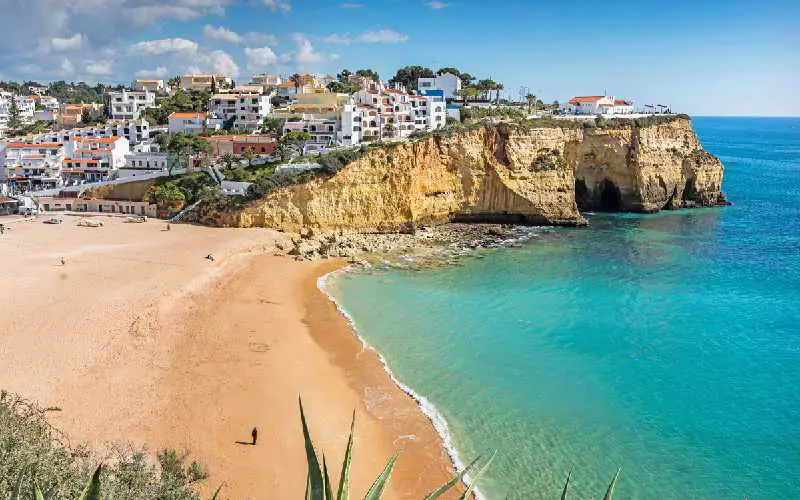
The small fishing village of Covoeiro has been declared a national monument in 1974, and is located on the southern coast of algarve Portugal. Covoeiro is one of the last naturally beautiful areas in northern algarve, due to its isolation from more populous tourist areas. It is also an unmistakable landmark for sailors and fishermen.
The covoiero region, with its most recent data from 2001, has about 350 inhabitants (of which 100 years and older). It is an unspoiled coastal landscape of rocky hills and sand dunes overlooking the blue waters of both the mediterranean sea and the atlantic ocean. Along with its neighbours (falesia, pedras del facho and serra d’el rei) covoiero is one of the last natural areas on the southern coast of Portugal.
Tavira
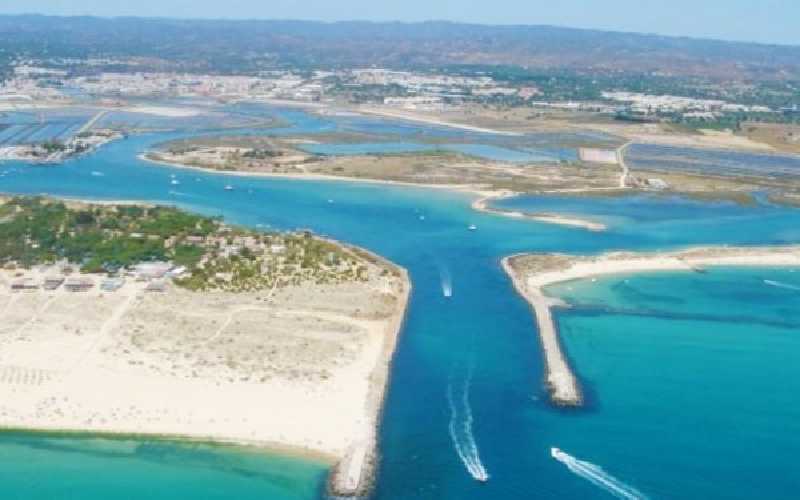
Tavira is a small fishing village located in Foz do Arieiro, opposite to Silves with a great blue flag beach. and also known for its Portuguese traditional houses that are build on the hillsides by the ocean side.
As you approach tavira by ferry or car it looks like any other typical portuguese fishing village with narrow “L” shaped streets.
But it has a unique charm to it, you’ll see old men playing petanca in the evening time, walking along the beach or dancing and singing fado(traditional portuguese songs)at cafes. You can still feel that this place is untouched by modern civilisation . If you are lucky enough then you can enjoy the nightlife in centre of Tavira. It’s fast becoming one of the most popular Fishing villages in Portugal with expats moving to Portugal from abroad.
The main shopping area is around Rua Principal which runs parallel to the beach. Tavira has plenty of cafes, restaurants and bars but the only thing it lacks is a swimming pool! if you like seafoods and fresh fish, then try out restaurant Petisqueira Floreal, which is in the small town of Foz do Arieiro near Tavira.
Cascais
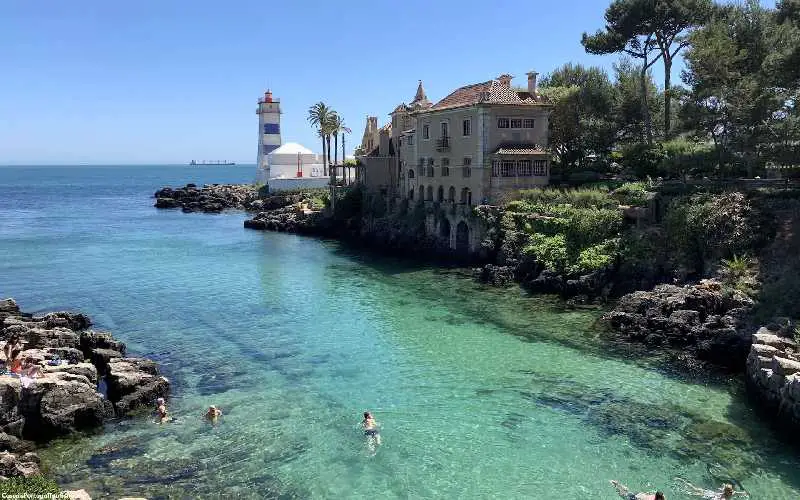
Cascais (population: 37,812 ) is a Portuguese municipality situated in the District of Lisbon. It is located on the Estoril Coast 30 km west of the capital city Lisbon and 20 kilometres north of the Tagus River’s mouth. The population consists mostly of elderly people who live in Cascais year round as well as young parents and their children who live in Cascais during the week. The population swells considerably during the summer when visitors come for vacation. However, many of these people are non-residents (from Lisbon or elsewhere) who own property there. As a result the town center is usually quite busy on weekends with people doing their shopping.
There are many large apartment buildings in Cascais, some dating to the 1960s. The area known as Guincho that faces out over the ocean has a more “resort” like atmosphere and is home to many people who work in Lisbon. There are scores of high rise apartments along the coast with great views of the Atlantic Ocean. The architecture is quite simple and practical (most don’t have elevator service). Cascais has a very small town center, but it does boast the old fishing village of Sao Sebastiao that was discovered in the late 1990s by Lisboners looking for a more rustic beach setting.
As you walk around Cascais, you will find that there are many shops, restaurants and cafes. The town center is beautiful with it’s small scale buildings, mosaic sidewalks and grounds keeping. Cascais has a large shopping mall called “Aquashopping” which contains numerous stores and restaurants as well as an 18 screen movie theater (the largest in Portugal). There are also two shopping malls in the neighboring Town of Estoril. These are called “Estoril Forum” and “Atlantico Shopping”. There is also a large Casino nearby which is one of the most popular night spots in Lisbon.
Cascais has been an important fishing port for hundreds of years and commercial fishing still plays a role in the local economy. There are many fresh fish restaurants in Cascais, and the seafood is quite delicious.
Porto Covo
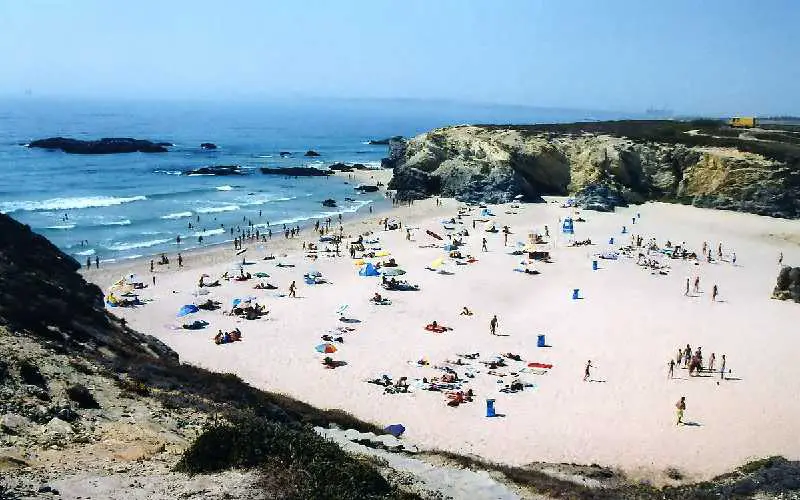
Porto Covo is a fishing village located in the west coast of Portugal. The fishing activity has decreased significantly, but steadily since the 70s until today. Today there are only a few boats left for commercial fishing on deep waters. The other boats fish only on shallow waters. Due to the lack of job opportunities, not many people remain in Porto Covo and most of them move to bigger cities in mainland Portugal or outside the country looking for work. Many things have changed with time; although this place is still beautiful to visit!
Peniche
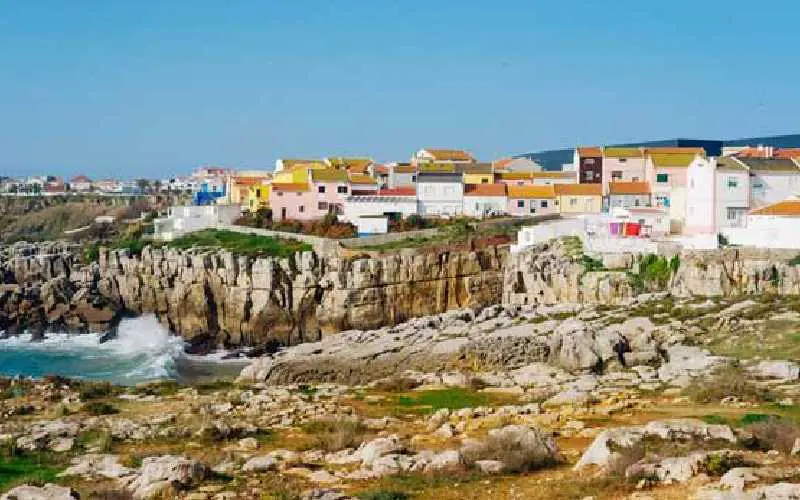
Peniche, Portugal is a small fishing village located on the Atlantic Ocean. It’s home to one of Europe’s most beautiful beaches and offers excellent surfing for all skill levels. Peniche has numerous hotels, restaurants, cafes and surf shops that offer good food and services.
When traveling to this area be sure to visit the historical Forte Sao Joao and the Julian Lines where you will learn about Peniche’s fascinating history. If you plan to enjoy some of Peniche’s surfing be sure to visit one of the many surf shops in town that offer equipment rentals and lessons.
Peniche is home of arguably one of Europe’s most consistent beach breaks, Baia da Barra, which has surfing for every skill level. It attracts surfers from all over the world, including Hawaii. In recent years there has been a lot of development on this beach, so be sure to visit it before it becomes too crowded and commercialized.
If you are hungry after your day at the beach check out one of Peniche’s restaurants or cafes for good food and wine. Try the local dish “Arroz de Marisco”, which is a rice entrée with shrimp, octopus, squid and other seafood.
Baleal
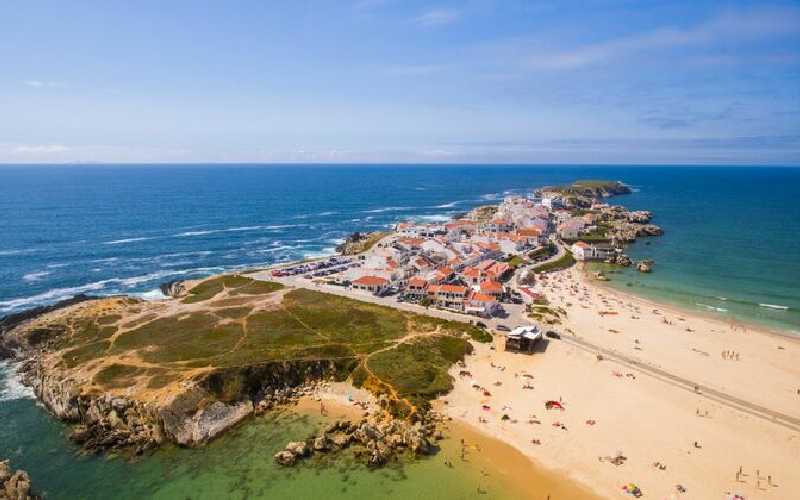
A small fishing village in Portugal, which is situated on a beautiful coast of Atlantic Ocean (beach) has grown to be very famous since 2010 – Praia da Beleal. It is a place where you can enjoy the scent of ocean, fresh air of wild nature and take pleasure in relaxing walks on clean sandy beaches.
The village is located on the sea coast at about 25 km east from Oporto. The distance to Lisbon – Portugal capital is over 300 km. The village has only one main street surrounded by fishermen`s houses and small businesses, fish-trucks and shops. You can see some very interesting traditional architecture of the buildings in this village. The seashore is a place where you can feel the real magic of nature, hear music of ocean waves and communicate with people living nearby.
Aveiro
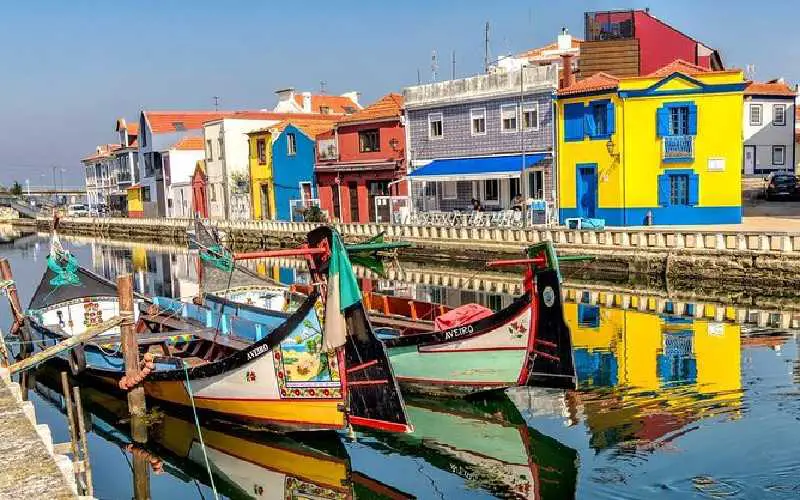
The narrow streets of Aveiro are bustling with activity even in the early hours of the morning when most fisherman return from a night time fishing trip, carrying crates of fish on their heads.
Aveiro is famous for its town square which has old ships buried in the sand. The broken ships serve as an outline for the square and the sandy beach is perfect for sun bathing. These ships were buried during a storm when they ran aground on sand banks.
There are many small cafes, restaurants and bars in the town square where you can sit at an umbrella table under huge umbrellas drinking coffee and eating fresh fish from little stalls along the side of the square. The restaurants that have tables in the main square are full of people in the evenings and it is a busy social hub for the town.
Tourist visiting the area can easily arrange boat trips to visit the many islands and beaches off shore.
There are boats that leave from Aveiro every day taking tourists to visit wonderful little islands with coves and beaches. These islands are a paradise for sun bathing, swimming and walking in the sea or they can visit the little towns and villages where they can swim in freshwater pools from ancient hot springs.
Ponta delgado
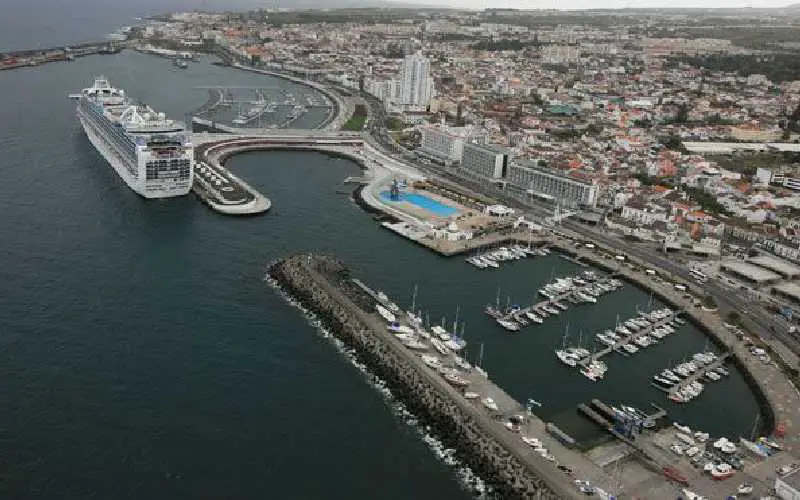
A gateway to the island of Sao Vicente, Ponta Delgado is the capital of Cabo Verde’s northernmost district. By night, the two-lane street that leads into town from its iconic lighthouse brims with honking taxis — a product of the small city’s popularity as a weekend destination for nearby African cities like Dakar, Senegal or Banjul, the capital of The Gambia.
By day, fishing boats congregate at Ponta Delgado’s fishing wharves while locals go about their business in cafes and shops on cobblestone streets before heading home for lunch. Groups of school children dressed in crisp uniforms walk their yellow labrador retrievers or wait in line after school for fish sandwiches and Portuguese sodas at their local cafeteria. A large Catholic church sits near the beach while a mosque peeks out from behind palm trees on the other side of town.
Originally founded by Portuguese settlers, Ponta Delgado’s architecture traces its roots back to its colonial past along with African influences brought by slaves. With its enormous windows and vibrant colors, the homes in Ponta Delgado are simple but elegant, giving one a sense of what life may have been like for Cabo Verde’s early settlers.
Ponta Delgado is home to an active fishing industry with vessels headed out on daily excursions to fish the waters off Sao Vicente. The city’s fishing division is responsible for more than 90% of the export fish from Cabo Verde, and most of the ice plants in Ponta Delgado process their catch to be sold primarily overseas.
Ferragudo
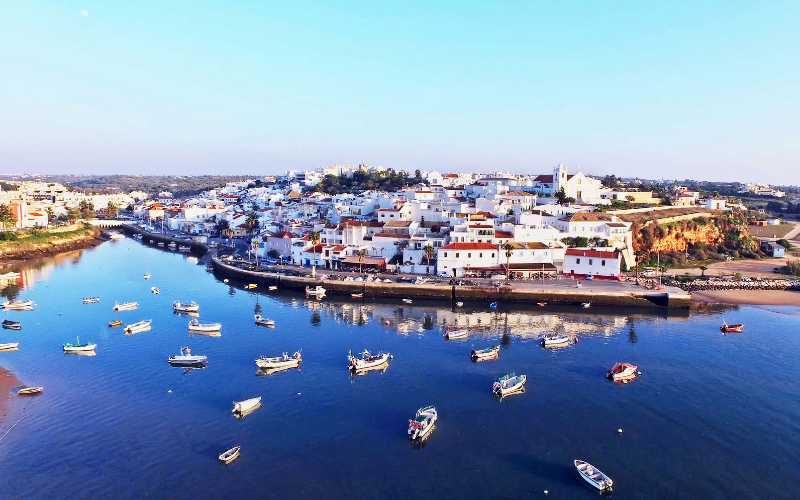
Ferragudo is characterized by fishing huts, whitewashed buildings and narrow cobbled streets. It has retained the original charm of a fishing village and boasts one of the most picturesque ports on the coast, just minutes from some of Portugal’s most beautiful beaches. The village with its picturesque church and fisherman’s residence Castelo de Sao Joao do Arade is ideal for a pleasant half-day or full-day excursion from Praia da Rocha, and more and more visitors rent holiday homes in the village to enjoy the peace and quiet.
The Impact of Industrialisation and Globalisation on the Fishing Villages in Portugal
The fishing villages in Portugal are a perfect example of the profound effect that globalization does not always have on how people live. The fishing communities still remain traditional, relying on the sea but adapting their way of life to be sustainable into the future. There are many aspects of daily life that vary between these villages and those found in more developed countries. These places are dependent on what they can do for themselves and they do not rely heavily on outside help and government funding like other communities tend to.
In order to preserve this lifestyle, it is necessary for these communities to preserve their traditions; however, there is also a need for new ideas which could modernize daily living skills of these communities without changing too much about them as a whole.
The fishing villages in Portugal have a long history and tradition. In addition to their reliance on fishing, the local people also continue to work the land for agricultural purposes and grow crops. This traditional way of life and the people who choose to continue to live this way of life are under threat from globalization as it becomes harder for them to continue on this way given current global economic conditions.
There have been new government regulations that provide more protection for Portuguese fishing areas, however these changes do not seem to be helping much with the economics or with the future of these communities. Even with this threat, many people are still choosing to stay in their communities and develop new technology and ideas that could make them more sustainable into the future.
If you enjoyed this article you might also like to read about Algarve Fishing Villages


4 thoughts on “Fishing villages in Portugal”